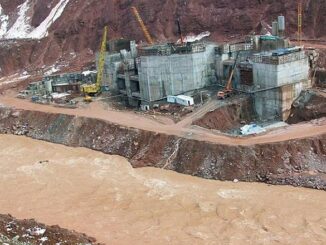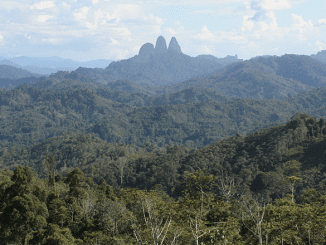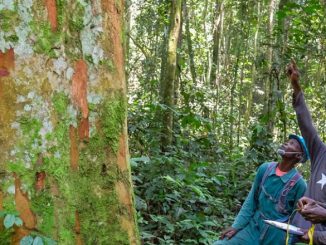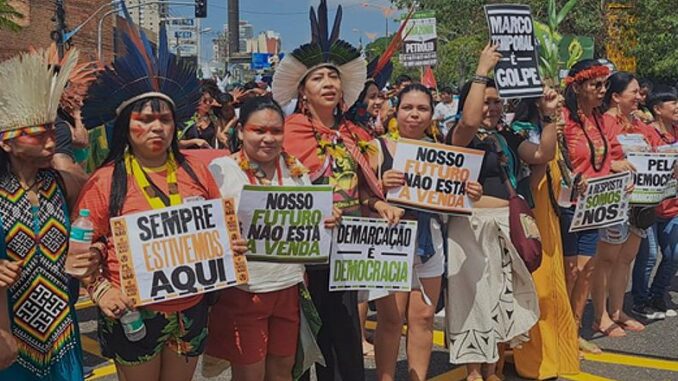
By Benjamin Seidman
BELEM, Brazil, August 11, 2023, (ENS) – Brazilian President Luiz Inacio Lula da Silva this week hosted a two-day regional summit of the eight Amazon River basin countries seeking a plan to save the world’s largest rainforest. At their meeting in Belem on August 8 and 9, the eight leaders had intended to reach consensus on issues from deforestation to sustainable development in the Amazon in the first such conference in 14 years.
The agreement they signed is a list of good intentions that offers little in the way of measurable goals and timeframes. Still, the Confederation of Indigenous Organisations of the Amazon Basin celebrated the inclusion of two of its main demands, and others applauded a new level of cooperation.
The summit was attended by the eight member states of the Amazon Cooperation Treaty Organization (ACTO), Bolivia, Brazil, Colombia, Ecuador, Guyana, Peru, Suriname, and Venezuela, alongside delegations from other similarly forested countries, including Indonesia, Democratic Republic of Congo, Republic of Congo, and Saint Vincent and the Grenadines.
Covering 5.5 million km2 (2.1 million sq mi), the Amazon rainforest includes territory belonging to nine nations and 3,344 formally acknowledged Indigenous territories (ITs).
The Amazon takes in more than half of Earth’s remaining rainforests and comprises the largest and most biodiverse tract of tropical rainforest in the world, with an estimated 390 billion individual trees in about 16,000 species, according to a study by the Field Museum.
The majority of the forest, 60 percent, is in Brazil. Peru has 13 percent, Colombia 10 percent, and there are minor amounts of the forest in Bolivia, Ecuador, French Guiana, Guyana, Suriname, and Venezuela.
The Amazon rainforest absorbs one-fourth of the greenhouse gas carbon dioxide (CO2) absorbed by all the land on Earth. The amount absorbed today, however, is 30 percent less than it was in the 1990s because of deforestation.
The World Bank calls the Amazon “the most culturally and biologically diverse place on the planet,” where one in 10 known species in the world lives.
The Colombian NGO Saving the Amazon emphasizes the importance of protecting the forest saying, “It houses 30 percent of the world’s biodiversity… it is inhabited by more than 350 indigenous groups… It has the largest carbon reserve on the planet, and its existence is vital to fight against the Climate Crisis.” Yet, the group adds, “The Amazon is threatened by many industries due to its great amount of natural resources and land extension.”
Amazon Nations Unable to Reach Agreement
The Belem summit failed to produce a unified stance on many of the most important topics discussed. Tensions flared as Venezuela and Bolivia remained holdouts on reducing deforestation.
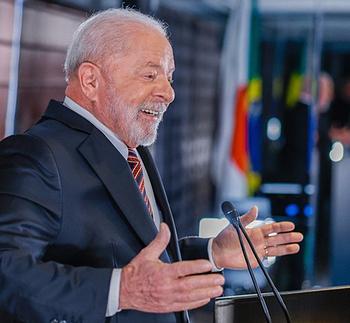
On June 5, the government of Brazilian President Luiz Inácio Lula da Silva, known everywhere as Lula, pledged to end deforestation by 2030; several other countries agreed to do the same.
Lula said he hoped, as host of the Belem summit, to convince all other ACTO countries to sign onto that pledge, proclaiming, “The challenges of our era and the opportunities arising from them demand we act in unison… it has never been so urgent.”
But Bolivian President Luis Arce focused on the economic potential that further exploitation of the Amazon promised. “The fact that the Amazon is such an important territory does not imply that all of the responsibilities, consequences and effects of the climate crisis should fall to us, to our towns and to our economies,” President Arce said.
The World Bank, too, advises more econoomic development. “The annual value of the Amazon rainforest alone is estimated at a minimum of US$317 billion: the Amazon regulates the global climate; it harbors 25 percent of known terrestrial biodiversity; its “Flying Rivers” are critical for South American agriculture and hydropower; and it provides livelihoods for many rural populations,” the World Bank states in its May report, “A Balancing Act for Brazil’s Amazonian States: An Economic Memorandum.”
The World Bank emphasizes that “rising living standards and preserving standing forests can be complementary under a development model that simultaneously promotes urban and rural productivity, forest protection, and sustainable rural livelihoods. Conservation finance can play a critical role in funding this model,” the bank states in its report.
“The risk of reaching tipping points dramatically increases the cost of deforestation,” the report warns. “There is an urgent need to protect Amazonian forests.”
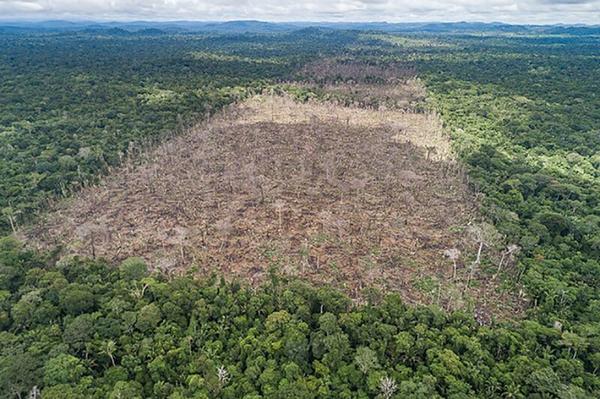
“A much stronger emphasis on productivity, notably in sectors beyond commodities, would propel development countrywide and help to lift Amazônia’s economies while taking pressure off its natural forests,” said the World Bank’s Country Director for Brazil Johannes Zutt.
The “Belem Declaration” drafted at the summit ultimately fell short of the united commitment Lula sought, simply asking each country to pursue its own deforestation goals.
Meanwhile, Colombian President Gustavo Petro spearheaded an effort to stop further oil extraction by the eight ACTO member states. “Are we going to let hydrocarbons be explored in the Amazon rainforest? To deliver them as exploration blocks? Is there wealth there or is there the death of humanity?” he inquired.
This time Brazil proved unmoved as the country continues exploring oil drilling opportunities near the mouth of the Amazon River. Brazilian Energy Minister Alexandre Silveira told reporters, “What we are discussing in Brazil today is research of an extensive and large area – in my vision perhaps the last frontier of oil and gas before … the energy transition.”
Colombian President Gustavo Petro, by contrast, argued at the summit that a gradual energy transition from fossil fuels to renewable energy was simply an excuse to postpone the efforts required to address the climate crisis.
Although the Belem Summit participants ultimately agreed to cooperate on addressing environmental crimes, no fixed deadline was set nor substantive action taken to address illegal mining practices.
Despite being prohibited by Brazil’s Federal Constitution of 1988, illegal mining within Indigenous lands continues throughout the Amazon. These practices, such as the use of mercury in gold mining, destroy forests, take resources from Indigenous peoples, and release harmful levels of toxins like mercury into the environment which threaten wildlife and human life, many sources report.
Scientific Warnings Grow Louder
Scientists have long voiced their concerns about destruction of the Amazon rainforest. Brazilian Earth System Scientist Carlos Nobre told Yale e360 in a 2019 interview that “If you put all the perspectives together – deforestation, global warming, increased vulnerability to forest fires – we conclude that with the current rate of global warming, if we exceed 20 to 25 percent deforestation, then we reach the tipping point and 50 to 60 percent of the Amazon forest would become a savanna.”
“That’s why we are making this warning,” Nobre stressed. “Today we already have 15 to 17 percent total deforestation in the Amazon. So at the current rates of deforestation, we are 20 to 30 years off from reaching this tipping point.”
A study published in April by Brazilian and U.S. scientists from the University of California Los Angeles, NASA’s Jet Propulsion Laboratory in Pasadena, California, and the post-graduate Biodiversity and Conservation program at the Universidade Federal do Maranhão in Brazil shows that parts of the Amazon rainforest no longer serve as a carbon sink, but are now a source of heat-trapping carbon.
“Deforestation in Indigenous Territories in the Brazilian Amazon caused the emission of 96 million metric tons of carbon dioxide (CO2) between 2013 and 2021, modifying the forest’s role as a carbon sink in these areas. Emissions in the last three years of the period (2019-21) accounted for 59%, reflecting intensification of the destruction,” the study states.
“In absolute numbers, the areas deforested in these ITs may not seem so large, but ITs are supposed to be environmentally protected, so the impact is all the greater. In addition to the destruction of nature, deforestation brings other problems in its wake, such as diseases and threats to the survival of isolated Indigenous communities. A recent case involved the Yanomami, many of whom died owing to encroachment by wildcat miners [garimpeiros],” Professor Celso H. L. Silva-Junior, first author of the article, told Agência FAPESP from his post at the Federal University of Maranhão.
“We should bear in mind that ITs are fundamental for Brazil to be able to meet its environmental targets and mitigate the impact of climate change. Conservation of the forest and rivers in these areas is essential. The law must be enforced so that they continue acting as a force field to protect the standing forest and the traditional communities who live in them,” said Guilherme Mataveli, a co-author of the article. Mataveli is a researcher in the Earth Observation and Geoinformatics Division of Brazil’s National Space Research Institute (INPE) and has a postdoctoral scholarship from FAPESP.
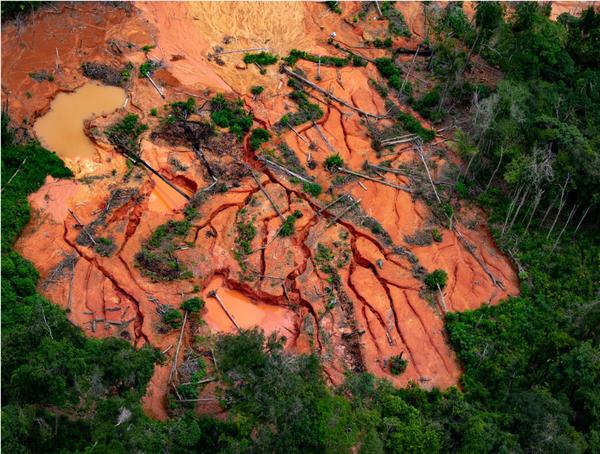
Considered an efficient forest conservation model, Indigenous Territories have come under growing pressure from illegal alluvial panning and mining operations.
The international NGO Greenpeace wrote in an April 2023 study of the Amazon, “The process of mining for minerals like gold is extremely harmful to the environment. From the rising mercury levels in the rivers that pose a threat to every living being that depends on the water for life to the deforestation and soil erosion, natural habitats are being destroyed by mining. The poisoning of the water and habitat loss are having widespread impacts on biodiversity and the food web in the forest, adding even more pressure to an ecosystem already under threat from the worsening climate crisis.”
The lack of deadlines agreed at the Belem Summit and the lack of urgency displayed by participants worries including Executive Secretary for Climate Observatory and coordinator for Greenpeace Brazil Marcio Astrini. “The planet is melting, we are breaking temperature records every day. It is not possible that, in a scenario like this, eight Amazonian countries are unable to put in a statement – in large letters – that deforestation needs to be zero,” Astrini objected.
On Twitter, Astrini later conceded that “the meeting was positive,” offering hope going forward, though he still described the resultant declaration as a “disgrace.”
Hope Follows Belem Summit
Far-right Brazilian President Jair Bolsonaro (2019-2022) did little to protect the forests as land clearing accelerated under his administration with nearly 4,000 square km (1544 sq. mi) of rainforest razed in the first six months of 2022, according to the Council on Foreign Relations, an American think tank.
His more liberal predecessor, also Lula (2003-2010), has prioritized protection of the environment since his second inauguration on January 1, curbing deforestation by at least 60 percent in July compared to the previous year, according to correspondence between Environment Minister Marina Silva and “The Guardian,” newspaper. This offers hope for the future of the forest in Brazil, and also serves to remind voters of the power they have to support the environment.
In Belem, consensus was reached concerning the importance of aid from developed countries that have themselves contributed to the climate crisis more than developing countries.
Colombia’s President Petro even went so far as to encourage a progressive “Marshall Plan”-esque strategy of debt cancellation from developed countries in exchange for climate preservation pledges from the developing world to encourage global tangible action.
“If we’re on the verge of extinction and this is the decade when the big decisions have to be made… then what are we doing, besides giving speeches?” he demanded.
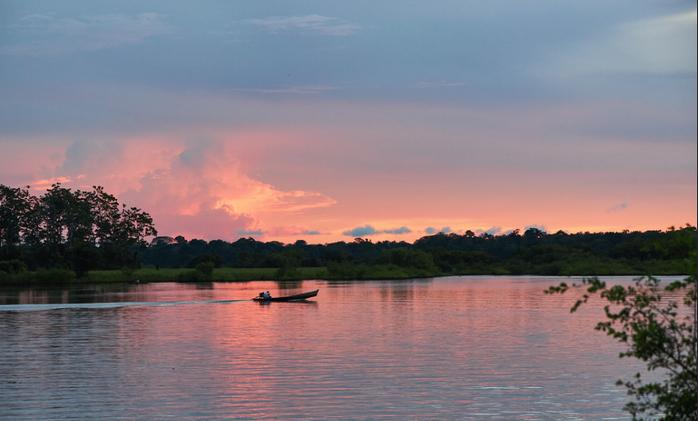
Financing Is Crucial: ‘Nature Needs Money’
On the first day of his third term in office, January 4, 2023, Brazil’s new president Lula signed a package of seven executive orders aimed at controlling deforestation in the Amazon and re-building the country’s environmental institutions.
As part of the package, Lula reinstated the Amazon Fund, a US$1.2 billion fund to protect of the world’s largest rainforest, after a three-year period of inactivity. Donors suspended transfers to the fund in 2019 after Bolsonaro unilaterally suspended the board of directors and the technical committee of the fund.
A member of the Workers’ Party, Lula first served as the 35th president of Brazil from 2003 to 2010. He was imprisoned in April 2018 after a sentence for corruption and money laundering by the controversial judge Sergio Moro was upheld by an appeals court. Lula has always proclaimed his innocence and argued the case against him was politically motivated.
Lula was released in November 2019 by a ruling from Brazil’s Supreme Court, but by then Bolsonaro had been elected president, and accelerated destruction of the Amazon rainforest had begun.
In March 2021, the Supreme Court ruled that Judge Moro, who served as Minister of Justice and Public Security in the Bolsonaro presidency, was biased, and all of the cases Moro had brought against Lula were annulled in June 2021. Lula was legally allowed to make another run for president in the 2022 elections, defeating Bolsonaro in a runoff.
Lula immediately reversed the destruction of the Amazon. Encouraged by a 42 percent drop in deforestation during his first seven months in office, President Lula has sought international financial support for forest protection.
After Wednesday’s meeting, President Lula told reporters that developed nations must make good on their pledges to provide monetary support for forest protection.
Lula criticized “protectionist measures poorly disguised as environmental concern” that restrict imports from developing nations, and said developed nations must make good on their pledges to provide monetary support for forest protection.
“Nature, which industrial development polluted for 200 years, needs them to pay their part so we can revive part of what was ruined. Nature is in need of money,” Lula said.
And money is coming in, although more is needed.
On June 30, the Bezos Earth Fund, established by Amazon founder Jeff Bezos, awarded US$50 million in grants to support conservation and sustainable development in the Amazon. The announcement came during a meeting with leaders of the Brazilian government and representatives of the Council of the Global Environment Facility, GEF, in Brasilia.
Cristián Samper, a Colombian-American tropical biologist specializing in conservation and environmental policy, now serves as managing director and leader for nature solutions at the Bezos Earth Fund.
Of the US$1 billion the Bezos Earth Fund has committed to conservation, Samper said, “So far, we have allocated more than $200 million to local and international organizations working in the Amazon and Tropical Andean region to advance climate and nature solutions, halt deforestation, and create alternative paths to prosperity for people living in the Amazon.”
The Inter-American Development Bank and the Brazilian Development Bank together have committed to investing US$900 million in small business in the Amazon.
The day before the Belem Summit opened, the two banks signed a letter of intent to move forward with PRO-AMAZÔNIA, a program that will scale up financing for micro, small and medium enterprises and small entrepreneurs in the Legal Amazon in Brazil. The Legal Amazon takes in nine Brazilian states with an approximate area of 5.1 million km².
Companies and small entrepreneurs from multiple sectors in the Legal Amazon will receive financing for modernization, expansion, goods and equipment acquisition, and innovation. The financing will include incentives to adopt sustainable practices, contributing to creating jobs and building a balanced and environmentally responsible economy in the region.
During the short two day summit, much was accomplished. The Belem Declaration defended indigenous rights, set goals for sustainable development, and set the stage for cooperation on water management and health.
Despite criticism, the summit had undeniably positive outcomes with clear movement towards sustainability and conservation across much of the Amazon region.
As the summit concluded, President Lula underscored the importance of more frequent cooperation, saying, “It will be essential to have a strengthened ACTO, with regular meetings of presidents and authorities, increased social participation through the Amazonian Mechanism of Indigenous Peoples and the institutionalization of the Amazonian Parliament.”
Featured image: Indigenous women demonstrate outside the summit’s venue, the Hangar Convention Center, Belem, Brazil. August 8, 2023 (Photo courtesy Amazon Watch)
© 2023, Environment News Service. All rights reserved. Content may be quoted only with proper attribution and a direct link to the original article. Full reproduction is prohibited.

